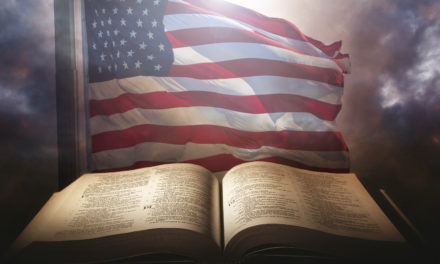Passover Parallels
By Thomas Thorne
McDowell County
The Passover ceremony is observed every year in many countries by the Jewish people as well as many Christians. This year Passover will be on April 22. This wonderful celebration is both a humbling and a joyous occasion. Humbling in that we memorialize our Savior’s crucifixion yet joyous because we realize that it is because of Jesus’ crucifixion that we can have freedom from being slaves to sin, freedom from our arch-enemy Satan, and freedom to serve Jesus.
Besides these two main focus points just mentioned, which many are aware of, there are several parallels between the Old Testament Passover when compared to Jesus’ life, death, and resurrection. Some of these are:
- The lamb was without blemish. Jesus was perfect, without blemish.
- The death penalty was imposed when the lamb was chosen. Jesus came to receive the death penalty to free us from the bondage of sin.
- The lamb’s bones were not broken. Jesus’ bones were not broken.
- The blood of the lamb applied to the doorposts saved the Israelites’ firstborn. The blood of Jesus shed on the cross saves us.
- The blood of the lamb allowed the houses of the Israelites to be “passed over” and spared from death. The blood of Jesus allows us to be “passed over” from death as the “wages of sin are death, but the gift of God is eternal life in Christ Jesus our Lord” (Rom. 6:23).
- As the Israelites ate matzah, Jesus told us to take and eat of the unleavened bread as this was symbolic of His body (Luke 22:19).
- The Israelites were instructed to eat the lamb at the first Passover. We also must partake of Jesus. We all need to accept the sacrifice of Jesus the Messiah.
- The lamb was to dwell with the family members for four days before Passover (Exodus. 12:6). They became close to this lamb. Jesus wants to dwell in our homes and hearts always.
- All of the flesh of the lamb was to be eaten (Exod. 12:8–9). Our goal is to completely assimilate the life of Jesus. His body has been broken for us.
- The Israelites were saved by the blood of the first Passover and participated in the first exodus. Believers in Jesus Christ are saved by His sacrifice on the cross to participate in the second and greater exodus—from the slavery of sin to the freedom experienced as children of God.
Other points related to life include:
- Passover celebrates liberation from the dominance and oppression imposed upon the Israelites in Egypt. It also celebrates liberation from the dominance of sin. We are told by the apostle Paul that we are all “slaves to sin” and its vile consequences. We have been set free from sin and have become slaves of righteousness.
- Passover was a direct fulfillment of the prophecy given to Abraham in Genesis 15:13–14 where God told Abraham that his descendants would be strangers in a foreign country. They would be mistreated for four hundred years, but eventually, they would come out with great possessions.
- Passover happens in the springtime of the year—a time that signifies new life.
- The lamb was to be eaten with unleavened bread. In the New Testament leaven is shown to symbolize sin (1 Cor. 15:7-8). Since leaven symbolizes sin, unleavened bread is a symbol of righteousness and is therefore a picture of a new life for those who have been cleansed and bought back by God.
- By connecting deliverance from Egypt and deliverance from sin with the blood of the lamb, Passover keeps alive the hope of redemption. It appeals to people of all ages to look forward to a time of freedom, redemption, and restoration for the entire world.
Passover also has past, present, and future applications.
Past: Passover helps us remember God’s promises to the Israelites and also look back on the crucifixion of Jesus, a sacrifice that took place for everyone.
Present: Passover points to the present. Each celebration is a new confirmation of God’s covenant with His people (1 Cor. 10:16).
Future: Passover is an anticipation of the future messianic banquet (Mark 14:25, 1 Cor. 11:26).
And let’s not forget, a chief purpose of Passover was to prophesy Jesus.
Shalom,
Tom Thorne
____________________________________________
Tom Thorne and his wife (Amy) moved to Marion from Denver, NC almost a year and a half ago. Thomas and Amy are fellowship leaders of a small congregation of Believers called “Servants of the Most High God.” Tom can be reached at servantsotmhg@gmail.com
____________________________________________
Read more Christian news here.








